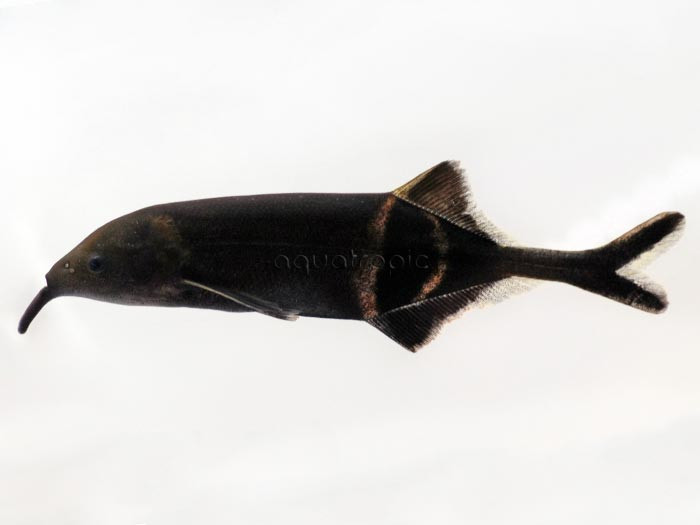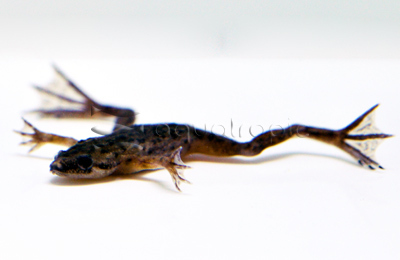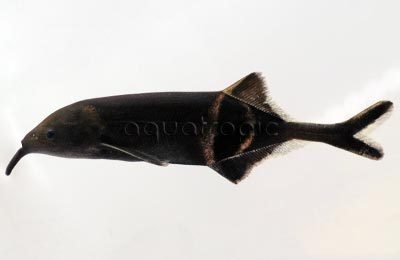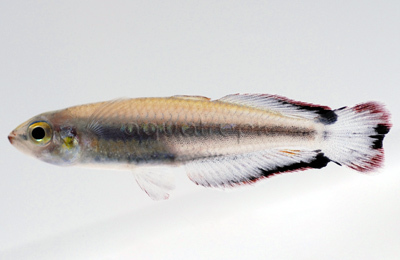The Fishes Of Africa (That Aren’t Rift Lake Cichlids) - Part Two

In continuation from last week's article, let’s take a quick look at another group of African fishes that aren't rift Lake Cichlids...
Congo Tetra
Tetras are a group that is mostly associated with the tropical waters of Central and South America, but Africa has its own unique flavor from this group as well. However, the two are more distantly related than their common name would suggest. Those from the Americas belong to the enormous Characidae, with more than 1,100 species, while those from Africa are classified separately as the Alestidae, which has somewhere around 120 members. Who knows why one group flourished and the other remained so humble in its diversity? Why did Africa’s many rivers and lakes fail to produce more variety among its tetras? At least they got one thing right with the stunning Congo Tetra (Phenacogrammus interruptus). This lovely alestid boasts some enviable finnage and rich turquoise scales accented with a golden stripe along the back. It is magnificent.

African Dwarf Frog
Taking a break from the fishes for a moment, Africa is also home to the finest in fully aquatic frogs. Hymenochirus is a small genus of small species, none of which grow to more than a few inches in length. Unlike their amphibious cousins, who have a nasty habit of leaving the water to jump around and such, the African Dwarf Frogs are only ever found submerged in their aqueous home. Their natural habitat is found in the equatorial regions of Africa, where it occupies shaded pools in the regions dense tropical forests. Here, against the muddy bottom, these wee little beasties blend perfectly against the substrate as they go about their busy lives, tracking down whatever edible invertebrate morsels happen to cross their path. In the confines of an aquarium, Hymenochirus will thrive on a mixed diet of pellet and frozen foods, provided that these rather lugubrious creatures aren’t entirely outcompeted for their meal.

Baby Whale
No, the Baby Whale is not an actual whale. It belongs to the Mormyridae—a groups of some 200 known species that are found exclusively in Africa. Like the bichirs and butterflyfish, this is part of the larger Order Osteoglossiformes. It’s only in Africa where these fishes seem to have managed to remain diverse and abundant, as elsewhere in Asia and the Americas they are represented by only a few scattered species. Mormyrids often possess an unusually contorted mouth that projects downwards, which they use to probe into soft substrates for their invertebrate prey. This has given rise to their common name, the elephantfishes, but it doesn’t apply to every member of the family. The Baby Whale (Pollimyrus castelnaui) is one exception seen sporadically in the aquarium trade. It originates from a wide expanse of Central and Southern Africa, particularly the Zambezi river system. It’s rounded face and unusual dimensions must have reminded someone at some point of a whale, and, like the baleen whales, this little fish can be fed on a diet of small crustaceans.
Fahaka Pufferfish
Freshwater pufferfishes are thoroughly awesome in every imaginable way, and one of the most awesome members of the group is Tetraodon lineatus. This West African species occurs in a wide range of lakes and rivers, typically in areas of heavy vegetation. Unlike many of the freshwater pufferfishes available to aquarists, the Fahaka is a beastly beast, growing to nearly a foot and a half in length! But it’s not just big... it’s also beautiful, with its golden body being striated all over with thick parallel lines. In the wild, this species feeds heavily on mollusks, but aquarium specimens will accept most any meaty food. Still, it is vital to provide crunchy foods to help wear down the continuous growth its beak-like teeth. The Fahaka Pufferfish is, alas, an angry creature, and it can be exceedingly difficult to find tank mates that will not succumb to its mighty piscine wrath.

Madagascar Rainbowfish
The island of Madagascar is famed for its unique and increasingly imperiled biodiversity, but relatively little of this is available to aquarists. However, there is one exception to this rule— the Bedotia rainbowfishes. This group has been bred commercially in large numbers for years now and represents the only chance that most aquarists will ever get to keeping a piece of Madagascar’s fish fauna. Bedotia shares a similar appearance to the familiar rainbowfishes of New Guinea and Australia, having the same general shape to their dorsal and anal fins. But the family to which those fishes belong—the Melanotaeniidae—is considered to be only distantly related to the Malagasy Bedotiidae. The true biodiversity of the Madagascar Rainbowfishes is presently poorly understood, with different authors offering a different interpretation of which populations are and are not true species. There might be ten… there might be twenty… nobody really knows. But we do know that the low-elevation coastal streams that they inhabit are becoming increasingly under threat.